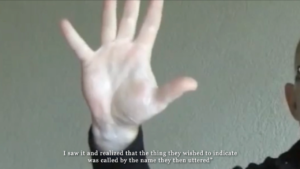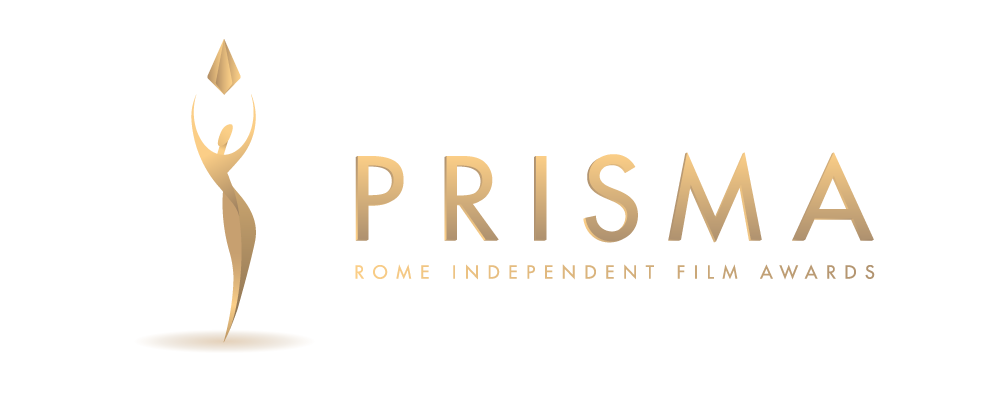04 Set An interview with Yan Jin, director of “Cremeschnitte”
Posted at 13:15h
in Interviews
BIO
Currently based in New York, She obtained her Master of Fine Art from School of Visual Arts, Photography, Video and Related media department in 2021. Her works include photography, video, sculpture, and multi-media installations. Exhibitions and screenings include United States, United Kingdom, Italy, Spain, Serbia, Greece, South Korea and Thailand.

What led you to choose to give the form of video essay to your linguistic and cultural research around the diffusion and elusiveness of the protagonist of the film, the Cremeschnitte?
This film is based on my own personal experiences. During a trip to the Czech Republic, I stayed in the town of Karlovy Vary, which is the site of numerous hot springs. It was a quiet and lovely town, and that short stay remains enigmatic to me even today. My room faced the somewhat alleged archetype of the The Grant Budapest Hotel, featured in the Wes Anderson movie. The hotel room I booked happened to be a suite, by accident. There were a lot of spacious rooms I have no use of and I found myself opening all the doors, running around inside. A photograph of Oscar Wilde was hanging right above the sofa. It was snowing, and the car headlights cast a warm yellow glow through the curtains into the dimly lit room. In the middle of the night, I went downstairs to find something to eat, and there was an aged night attendant in the pantry. He didn’t speak any English at all. He opened all the cabinets for me to choose what I wanted to eat, and there was no one else around. In the end, he gave me two pieces of remeschnitte, laying on a plate. Of course I couldn’t understand the name he mentioned at the time, just like narrated in the film. It was only later, through photos I made I found what is it on the internet.
But what truly remains evocative to me is the way we communicated. There were some powdered drink with English on their packagings, but since he couldn’t read English, he could only see the Czech names on them. So he was worried that I didn’t know what was inside. He picked up a packet of cocoa powder and showed it to me. I nodded in agreement, but he was concerned that I didn’t understand, so he opened the package and let me smell the cocoa inside to demonstrate that it was cocoa, not coffee. It was the most remarkable moment. We weren’t losing our words yet our words mean nothing since we were both applying our own linguistic rules, just as Wittgenstein said, the communication is made impossible because our rules were different. Holding the hot cocoa and the cremeschnitte, I went upstairs and ate them while staring at the photograph of Wilde. The following day, people seemingly materialized out of thin air, populating the dining room, amplifying the surrealness of the experience of the night before. It felt as though the entire hotel had been isolated in a distinct temporal and spatial bubble, so as we can complete that experience.
I have told this story to many friends, always describing it as “movielike.” In order to represent that experience, I guess the most common approach would be to make a narrative short film. However, I’m extremely cautious when dealing with my own memories, any distortion or alteration risks the possibility of losing the original, permanently. I made up my mind the second I put a name to cremeschnitte, I researched it and discovered the story behind this delicious little thing. The choice of making a video essay is an easy one. For me, the essence of this story lies in languages and the goodwill we share towards strangers, which is the foundation and center of communication. As a non-native English speaker living in an English-speaking country, language has always been a subject of my attention. With the utmost respect for this experience, I chose to make the cremeschnitte the protagonist of the film, symbolizing a cultural transmission that breaks through linguistic and geographical barriers.

By searching for, or accidentally finding, the same preparation in different areas and cultures but under different names, the film questions the concept of physical boundaries. What was your conceptual approach to the abstract idea of borders?
The concept of boundaries is explored through the utilization of found footage. In each footage of cremeschnitte making, the pastry chef speaks in their respective native languages and use locally sourced ingredients to make the cremeschnitte (of course, in different names) that represents their own culture. Their languages remind us of the existence of physical boundaries. However, audience who watch this short film will instantly discover that they can easily obtain the same ingredients locally: eggs, flour, sugar, and etc. There’s nothing special about it. We live on these basic ingredients. Food, as one of the most important aspects of human culture, reflects various regional traits, yet we often find commonalities among these traits.
Boundaries are a construct of human society, not a natural phenomenon. Another metaphor in contrast to the cremeschnitte in the film is the Danube River. Flowing through multiple countries, the Danube River goes by different names in different nations. The natural characteristics of the river interact here with the cultural attributes of food, which establish a deeper context of the film. Our thoughts and perceptions are shaped by languages and how we name things directly reflects our cognitions of them. This cognitions evolve over time through communication and, in turn, reconstruct the things themselves, just like a recipe can change, more or less sugar, the proportion of the egg and the flour. The river may not change due to our cognition, but its historical and cultural significance are always in the change, just as boundaries are.

Could you talk about the challenges and rewards of creating a video essay format to explore these complex themes, as opposed to a more traditional narrative film structure?
While crafting the script, I often think of the final lines in “The English Patient,” where Katherine leaves a note for Almásy, it reads “We are the real countries, not the boundaries drawn on maps with the names of powerful men.” This narrative film has already expressed many of the things I wanted to convey through its beautiful cinematic language. For me, making a video essay posed a rewarding yet formidable challenge. The difficulty lies in effectively weaving together the archival clips I had at my disposal so that they collectively to generate a synergistic effect. I’m most satisfied with the results it achieved. It affords brevity as a format and helps me avoid being overly didactic, leaving space for the audience to think and discuss. I embrace different interpretations of the film because the beauty lies in the fact that, no matter how different we may be, we still deeply connect in the innermost parts of our beings.

In the film you quote some thinkers and philosophers including Augustine of Hippo and Ludwig Wittgenstein. From a cinematic perspective instead, what names would you cite as examples in your work?
There are a few names I should list here: Shelly Silver, Adam Curtis, Harun Farocki and Grahame Weinbren. All these filmmakers or video artist (in Shelly Silver’s case) have a significant influence on my work, particularly Harun Farocki. To start from the beginning, the inspiration of the film came from Wittgenstein’s “Philosophical investigations” and Jacques Derrida’s “Of Grammatology”. My mentor Grahame Weinbren holds a doctor degree in philosophy and he’s also a well celebrated and groundbreaking video artist and editor. He introduced me to these theories and we used to have conversations or say open discussion on these topics, and those dialogues serve as the solid foundation for this film.
During the editing process of this film, I watched Harun Farocki’s “Workers Leaving the Factory”(1995), and I was impressed by the resonance of ideas it evoked. He appropriated the footage from the first cinema film ever shown in public, Lumière Brothers’ “Workers Leaving the Lumière Factory”(1895) and intricately linked it with other most well known footages from the history of film, for example Charlie Chaplin’s Modern Times and Fritz Lang’s Metropolis. He reexamines the social conflicts and power structure within the wide context of cinematic history. I learned a lot from him since my practice is also about found footages, interweaving clips spanning different countries and time frames.
Farocki’s films share a unifying characteristic, that is the blurring of distinctions between reality and fiction. This characteristic underpins his essay films, endowing them with a persuasive quality while also allowing space for discourse and contemplation. Throughout his films, a consistent thread of critique directed at institutions and politics endures. This facet is particularly pronounced in “Images of the World and the Inscription of War”(1989), which additionally illuminates how images shape our understanding of the world, influencing our interpretations of history. The authoritative role of these images in the context of history is a central theme within Farocki’s body of work and I strongly identify with this.

What are you currently working on?
I am currently preparing for a two-person exhibition in New York, where I’ll be showing a new series of sculptural pieces. Being a multimedia artist, I don’t just limit myself to films; I also explore various artistic mediums. Each medium brings its own unique qualities to the table, which I find intriguing. However regardless of the forms, my subject remains consistent so it is quite a different experience. That said, I’m also looking forward to working on new film projects again in the near future.

